Moldova and Transnistria - a potted history that gives you context to the current day russian interference and influence in a strip of land the size of Maryland, to the West of Ukraine.
The Russian, the Ottoman, and even the Austro-Hungarian empires have left their imprint on modern-day Moldova.
1992, the #SovietUnion was disintegrating, with the continents trying to find its way into an post imperial land. From the soviet ashes, new nations are born into a world where they has to learn what it means to be free. For some it is going to be a nightmare experience - for others it will be like stepping out into sunlight after being imprisoned in a box for generations. Wars break out in Georgia, Tajikistan, Armenia, Chechnya with a brutality that will scar the nations for lifetimes.
One of the smallest wars that broke out, turns out to be on of the longest lasting effects out of all - the war between #Moldova and #Transnistria in 1992, setting the precedent for post soviet conflicts across the continent. Russian backed separatists, atrocities and interference by Moscow - the #Russian playbook was developed and refined and is still being used today.
Once part of the principality of Moldavia, this Maryland sized sliver of countryside became the breeding ground for the conflict over Transnistria.
A Brief History - and why you need to know about #Cobasna !
Prior to 1812, this area was under the control of the Ottoman Empire, before falling to the Russian who renamed it Bessarabia. The majority of the population did not really feel Turkish or Russian, they identified mainly with their South Westerly neighbour - Romania. Tsarist russia still standing strong, there was no chance that Transnistria would be allowed to unite with their preferred neighbours and culture in Moldavia.
The outbreak of World War 1 sent the russian crashing to its knees. By the time Lenin and the Bolsheviks took power in 1917, WW1 had left the russian weakened and at this time many ethnic minorities were able to successfully make a break for it from the Russian empire - including Bessarabia.
On February 7th, 1918 - a peasant uprising overthrew the Russified elite, proclaiming the Republic of Moldova, and the immediately voted to dissolve that new Republic and be annexed into Romania in a triumph of ethnic nationalism. Not everyone became part of this new expanded state. Across the Dnister river (bow the Romania / Soviet border), a number of villages on the east bank putting them into Soviet territory, while the Soviets were deeply upset at the annexation and they rejected it.
In 1924 they tried to lure them back by setting up the Moldovan Autonomous Soviet Socialist Republic on the east bank of the Dnister river - offering to guarantee Moldovans minority rights. This wasn’t enough to tempt them back, but the next World War II. The Romanians and the Soviets fought hard over the parcel of land - in a fight where Nazi backed Romania committed as many atrocities and Stalins marauding armies did. The end result was the Soviets won and it Bessarabia back under the control of the Soviets.
Thus the Moldovan Autonomous Soviet Socialist Republic was given legs and legitimacy. For those Moldovans who wanted to stay in Romania - this was an illegal occupation, where the Russification banned the Latin alphabet and relegated the language to a second tier.
The bad blood between those on the east bank of the river saw this countrymen as traitors who were backed by the nazis who wanted all of Romania to be controlled by Romania. The state was subdued by a harsh soviet regime, so the discontent between the two Moldovan peoples was kept under wraps, but deep down there was anger and loathing between the two sides.
When this eventually bubbled out of control - it resulted in a wave of bloodshed. The trigger to this bloodshed and disaster was Glasnost.
Next 👉 Enter Gorbachev
Michael Gorbachev brought about the end of Soviet political repression and the opening up of the USSR to new ideas and political movements. For many it was the first time they could define themselves by something other than obedient communists. In Moldovan Soviet Socialist Republic that meant reinvigorating their identity under the Romanians. This saw the creation of the Popular Front in 1989 - a movement dedicated to all things Romanian, the return of the Latin alphabet and the replacement of the Russian language as the national language.
Western Moldovans triumphed over the Eastern Moldovans is a great reset of the culture. This left the Russian speaking Moldovans on the east bank of the river, and the Turkish speaking Moldovans of the South, feeling their culture stripped away.
On CHristmas day in 1989, Romania’s corrupt dictator was overthrown. Nicolae Ceaușescu (left), President of the Socialist Republic of Romania from 1974, also General Secretary of the Romanian Communist Party since 1965, and his wife Elena Ceaușescu (right), were executed following trial on 25 December 1989.
A new found openness between Moldova and Romania ensued - the new Romania government opened its borders to Moldovans who responded in kind. Then came Moldovan SSR’s first democratic elections where the Popular Front dominated in a grand coalition. The new government rolled out new laws that were just shy of allowing them to become re-annexed by Romania again - and the new flag and national anthem was adopted, and Moldovan SSR law was given supremacy over USSR laws. They however shied away from Romania annexation and that angered a minority of Moldovans, with protests chanting for Bucharest to come and take over.
The first group to jump were the Gagauz - on August 19th, 1990 they declared independence, establish a tiny country in the south of Moldova. Without their own armed forces they were vulnerable, as Moldova mustered a militia to deal with them. Unfortunately Soviet troops were still stationed in the small new. country - forced the Moldovans back. That was all the encouragement the Russian speaking Moldovans needed on the east bank of the river.
On September 2nd, 1990 the Moldovans on the east bank of the Dnister river announced their independence as a brand new soviet republic within the USSR - the newly created TRANSNISTRIA.
For Gorbachev, this new upstart republic became too messy to deal with - especially since party loyalists in the Soviet Regime counselled him against Transnistria as a very bad idea. With the entire SOviet Republic breaking up under Gorbachev’s nose - keeping Transnistria proved to be impossible.
The first blood was spilled in November 1990, when the police in Moldova tried to cross the river, only for locals to block the bridge. Scuffles broke out and two people were killed. Not enough to spark a war, but it heated the paranoia up between the two Moldovans.
Over the remainder of the 1990’s, the Transnistrian’s started forming their own militias which merged under an umbrella Aled the Dnister Guard. It would take another Declaration of Independence to turn them into an army war. In August 1991, hardliners tried to depose Gorbachev and reinstate the old repressive USSR.
The coup failed, resulting in declarations of independence across Eastern Europe. This included Moldova, but this time it laid claim to all of Moldovan territory including the east bank side and the Gagaur’s homelands and Transnistria.
Next 👉 Old scars open as wounds and blood flows..
Old memories along ethnic lines were re-awakened along the lines of the 1940’s. A fight was brewing and all it need was an ignition point. The eastern separatists started taking over old soviet institutions on the east bank and by the end of 1991 this was all but completed.
There was one exception. Dubasari. Here on December 13th, 1991 - pro-Moldovans in a police station refused to give up to gangs of armed separatists. Transnistrian Guards and Moldovan police forces fought over control of the bridge spanning the river Dnister. This resulted in 20 separatists killed and 4 Moldovan forces killed too.
Things quietened down for a while, but the separatists by now had 20,000 men under arms - a mixture of volunteers, separatists and pro-russian Cossaks, who crossed over the river to fight. Moldova had to rely on its police forces, it had no regular army to defend the nation.
The fate of some of these policeman finally sparked the war. March the 1st, 1992 Tranistrian forces claimed the Moldovan police ambushes and killed one of their paramilitary leaders, sparking a backlash. Some suggest this was all a smokescreen for a planned attack. That evening the separatist forces and Cossaks marched into Busari and surrounded the police station and all 32 Moldovan policeman were taken hostage. This symbolism of this act was massive to the Moldovans.
Transnistria’ s leaders put the state on a war footing, the next day they hunted down the remaining Moldovans who had fled Burati. It was on this day in 1992 that the Transnistria war officially began.
By the time it ended, hundreds would be dead and the state of Moldova torn into two. Transnistrian forces destroyed the bridges over the River - isolating the state from Moldovan control. The remaining pro Moldovans on the east bank were driven back to the West Bank - the international Western community attempted to diffuse and end the conflict.
High level meetings involving Ukraine and Romania tried to reach a deal, and on March 24th, 1992 a ceasefire was signed. This did not stop the conflict though - fighting continued, Moldovan forces gather for an attack in Tighina (Russian name is Bender!). It was an important town for the Moldovan’s as it lay on the Western bank of the river, it was an important town for the Transnistrian forces too - being a stones throw from their “capital” Tiraspol.
On April 01 Moldovan police entered Tighina to regain control of the town, and this would have been achievable, save for the intervention of another actor in the conflict that had serious military might and power.
Russia.
Next 👉 Enter Russia and the playbook that has not changed.
Back in the Soviet era, the Moldovan SSR was home to one of the largest amunition dumps in Europe, at #Cobasna - on the east bank of the Dnister river. That meant Russia had a permanent deployment of troops to guard the dump.
When the USSR ceased to exist in 1991, all those soldiers found themselves stranded on Transnistrian territory with no clear command. In fact in 1992 there was a tentative agreement that these troops should be handed over to Moldovan SSR. But after the events of April 01, russia reneged on the deal and rechristened them the “Russian 14th Army”.
A day later the commander of the army demanded the Moldovans immediately withdraw from #Tighina. This marked Russia’s entry into the Transnistrian war. It also marked the end of Moldovan hopes of quelling the separatists.
By April 6th, Moldova scrambled for a settlement in the conflict, to avoid the engagement of the Russian 14th Army. By the middle of April the implementation of 400 international peacekeepers had been agreed. As the talks dragged on conflict still bubbled away, with scores of Moldovan villages being attacked. President Mircea Snegur called for an International force to come and restore order, but the United Nations ignored this request.
At this time Russia was alternating between denying their forces were even there to threaten full military action using the 14th Army. (Another one of the #UN’s #USELESS failures). Then the Russians resorted to the playbook used in Ukraine today - it claimed it needed to protect russian speakers from extermination camps by the Moldovans.
Moldova was left to fight it out without western support, climaxing in June 1992. They made one last attempt to reclaim the entire western bank and revisited attacking Tighina. Unfortunately by now - Russia had rolled tanks into the town to protect it.
The Moldovan forces managed to destroy 3 tanks. The brutal street fighting and use of tanks was the bloodiest day of the war, after two days around 200 Moldovan fighters had been killed and the city had been turned upside down into rubble. This saw the end of Moldovan’s dreams of losing with dignity. Moscow declared it would commit more units if they tried to take the city again.
Over the next month the Moldovans were forced to sue for peace. Moscow rejected the proposals for an international peace keeping force, and instead demanded that peace would be kept by a permanent placement of 1500 russian soldiers in Transnistria, which would remain independent of Moldovan control. Again the Moldovan President tried to gain support from international peacekeepers, but there were not takers.
The Transnistrian war ended on July 21st, 1992 with a ceasefire agreed - in #Moscow. 1130 people were killed, 3500 wounded, 200,000 civilians fled their homes (with a total population under 3 million). The conflict was over - but the russian tentacles of interference have remained and haunt the region to today.
With the indicted war criminal Vladimir Putin’s demise - perhaps Transnistria will one day fall back into a unified country - without the malign and brutal influence of the aggressor state of the Russia.
Next 👉 An important perspective on the Cobasna Ammunition depot in Transnistria - an update in 2023.
The military depot in Cobasna was created in the 1940s in the Ribnita district, then the Moldavian SSR, now the separatist region of #Transnistria.
During the Soviet period, the artillery ammunition depot no. 1411 was a strategic arsenal of the western military district of the USSR. Most of the ammunition was stored here after the withdrawal of Soviet troops from the former German Democratic Republic (GDR), Czechoslovakia, and other countries in the former Warsaw Pact.
The majority of the original ammunition has either disappeared or has been removed from Cobasna under Organization for Security and Co-operation in Europe (#OSCE) supervision. Military equipment which was impractical to remove has undergone on-site destruction as per Moldovan demands that the "weapons dump" of Transnistria be removed.
Transnistrian sources claim that the U.S. State Department recognizes that the process of removal of Russian munitions and equipment has been carried out with efficiency during 2003.
In 2004 this removal process was blocked by Transnistrian authorities after tensions rose.
Today, around 22,000 tons of military equipment and ammunition reportedly remain there, guarded by Russian troops. 1,500 troops of the Operational Group of Russian Forces are stationed in the area.
On 27 April 2022, the Ministry of Internal Affairs of Transnistria reported that drones flew over Cobasna and that shots were fired on the village. The ministry claimed that the drones came from Ukraine. Several attacks had recently occurred in Transnistria at the time.They occurred during the 2022 Russian invasion of Ukraine, and may been a false flag operation by Russia or Transnistria itself.
Currently, about 20,000 tons of weapons and ammunition are stored at this warehouse, of which 57% are obsolete and cannot be used or transported, and access to the area is strictly prohibited, being controlled by Transnistrian and Russian peacekeeping forces. A possible explosion of these deposits, which cannot be transported, would cause an ecological and human disaster.
The ammunition depot in Cobasna presents a serious technogenic and ecological danger not only for the Republic of Moldova but also for Ukraine. In 2005, the Academy of Sciences of the Republic of Moldova published an expert report on the threats posed by the accumulation of weapons in the Transnistrian region.
A possible explosion of the military depot in Cobasna can be compared to the detonation of a 10-kiloton nuclear bomb, which was dropped on the city of Hiroshima in 1945.
After the explosion, a crater with a radius of 1.5 kilometers and a depth of 75 meters would form. However, given that Cobasna is located in a rural area, the range of the explosion can reach 40-50 kilometers. Therefore, the effects of the explosion can be compared to the damage caused by an earthquake of 7-7.5 degrees.
Experts point out that an explosion of the ammunition depot in the village of #Cobasna will lead to population damage and a humanitarian and ecological catastrophe in the northeastern region of the Republic of Moldova and the territory of Ukraine on an area of 500 to 3000 square kilometers.
The recycling and disposal of weapons is in this case the only way to prevent any spontaneous explosion of #ammunition in the military depots in Transnistria since the Second World War.
References and sources:
https://arnika.org/en/hotspots/moldova/the-largest-illegal-arms-depot-in-eastern-europe
https://en.m.wikipedia.org/wiki/Cobasna
https://carnegieendowment.org/2017/05/23/moldova-between-russia-and-west-delicate-balance-pub-70056
https://www.britannica.com/place/Moldova
https://en.m.wikipedia.org/wiki/History_of_Moldova#:~:text=The%20history%20of%20Moldova%20can,1538%20until%20the%2019th%20century





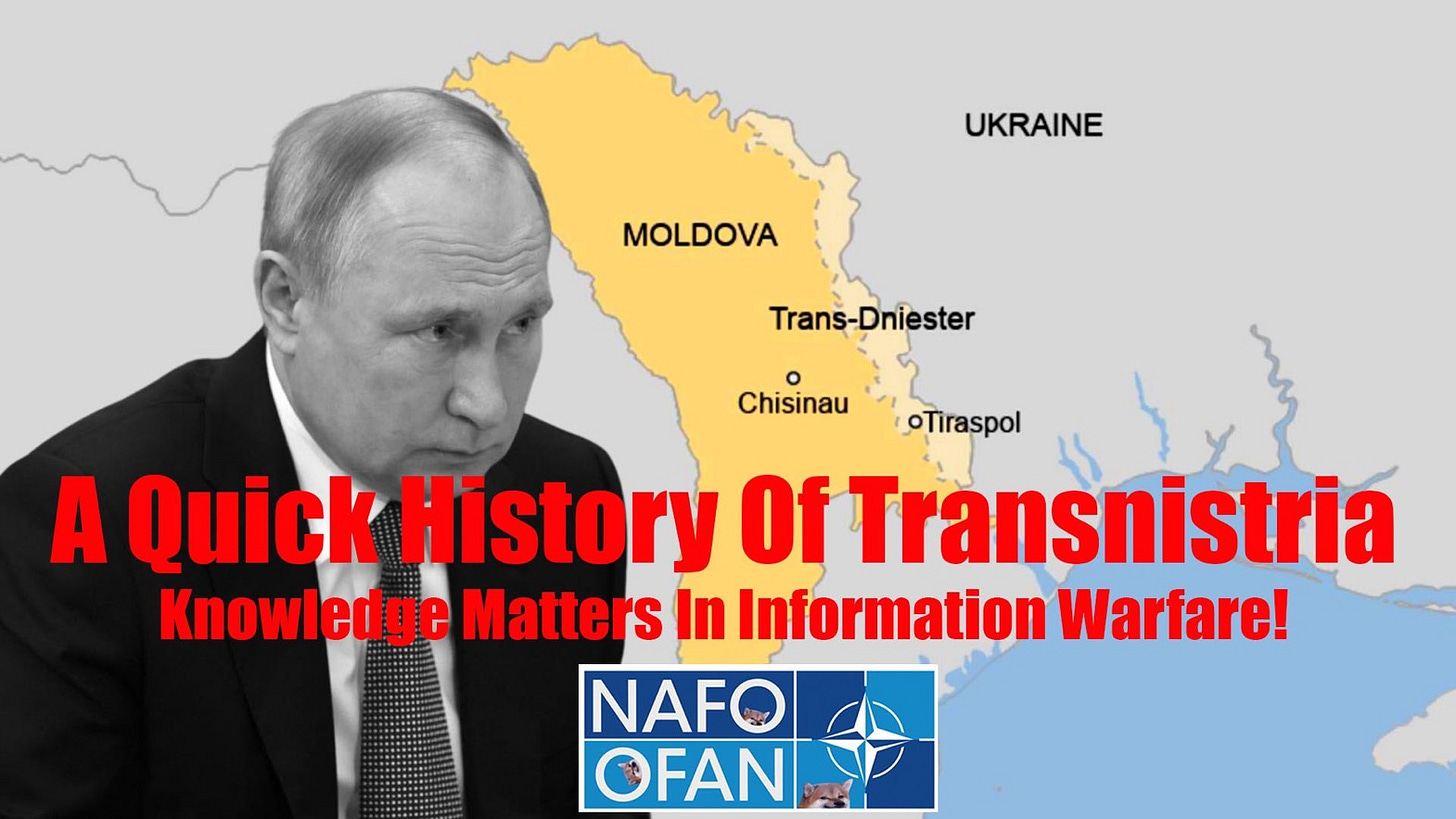
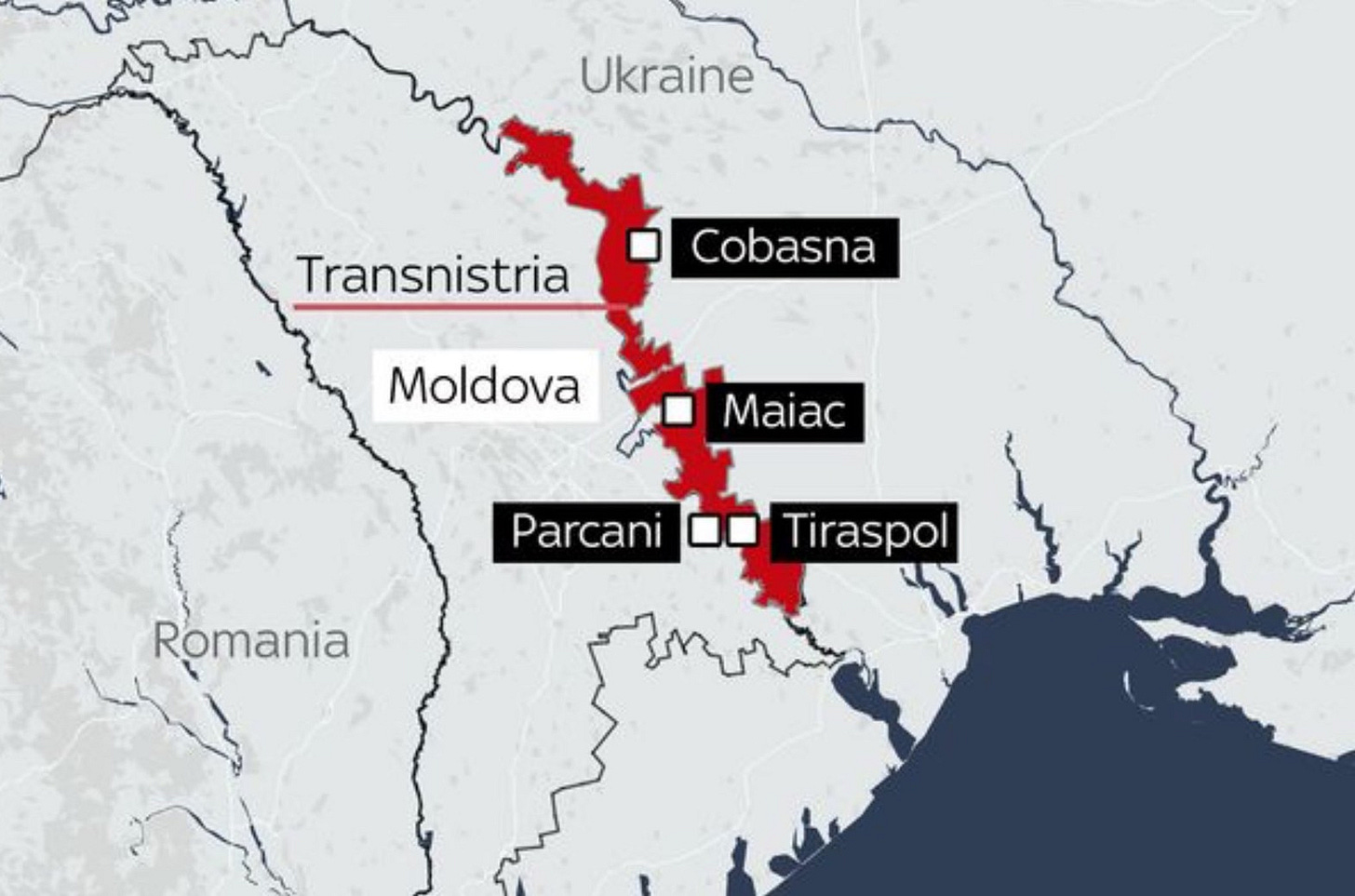
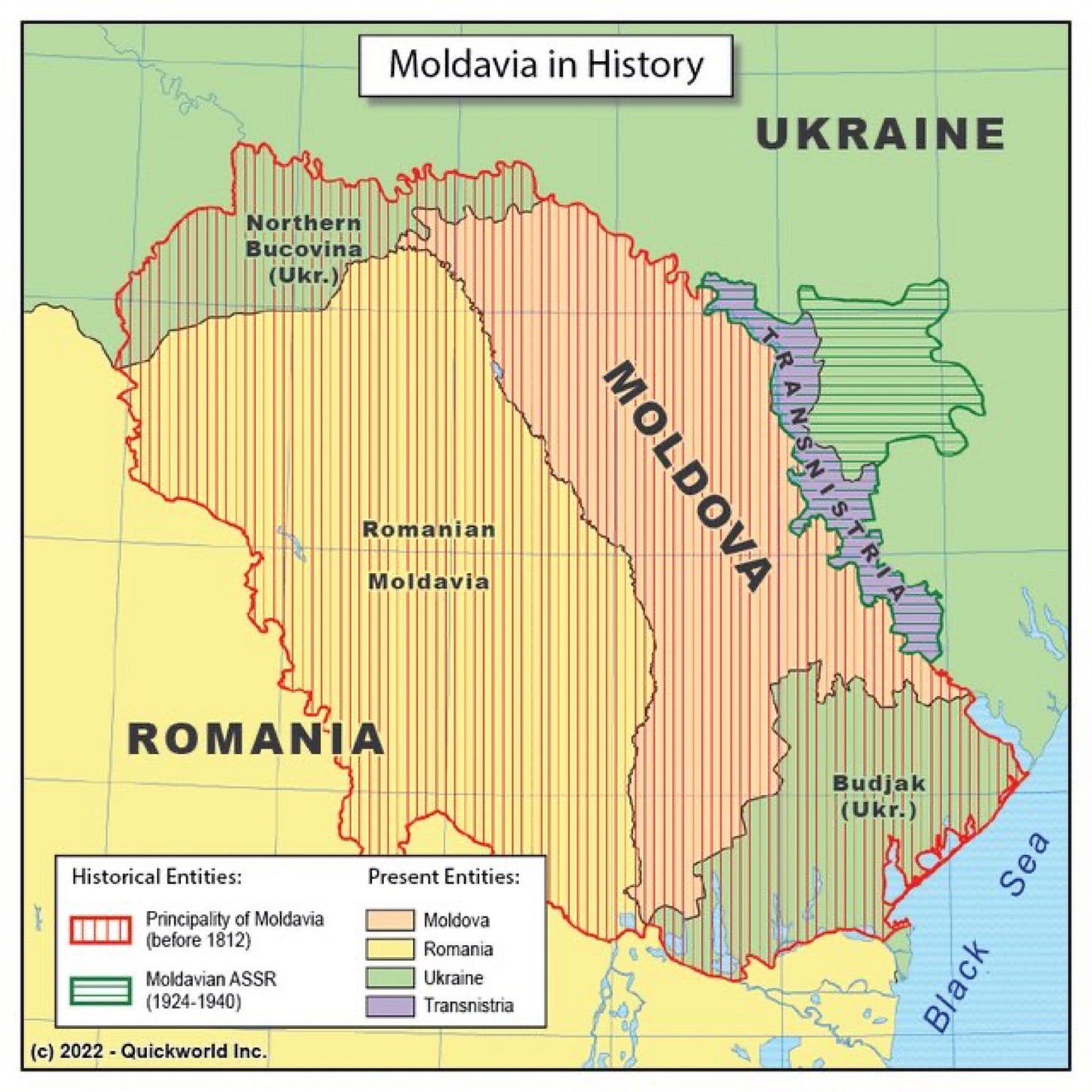
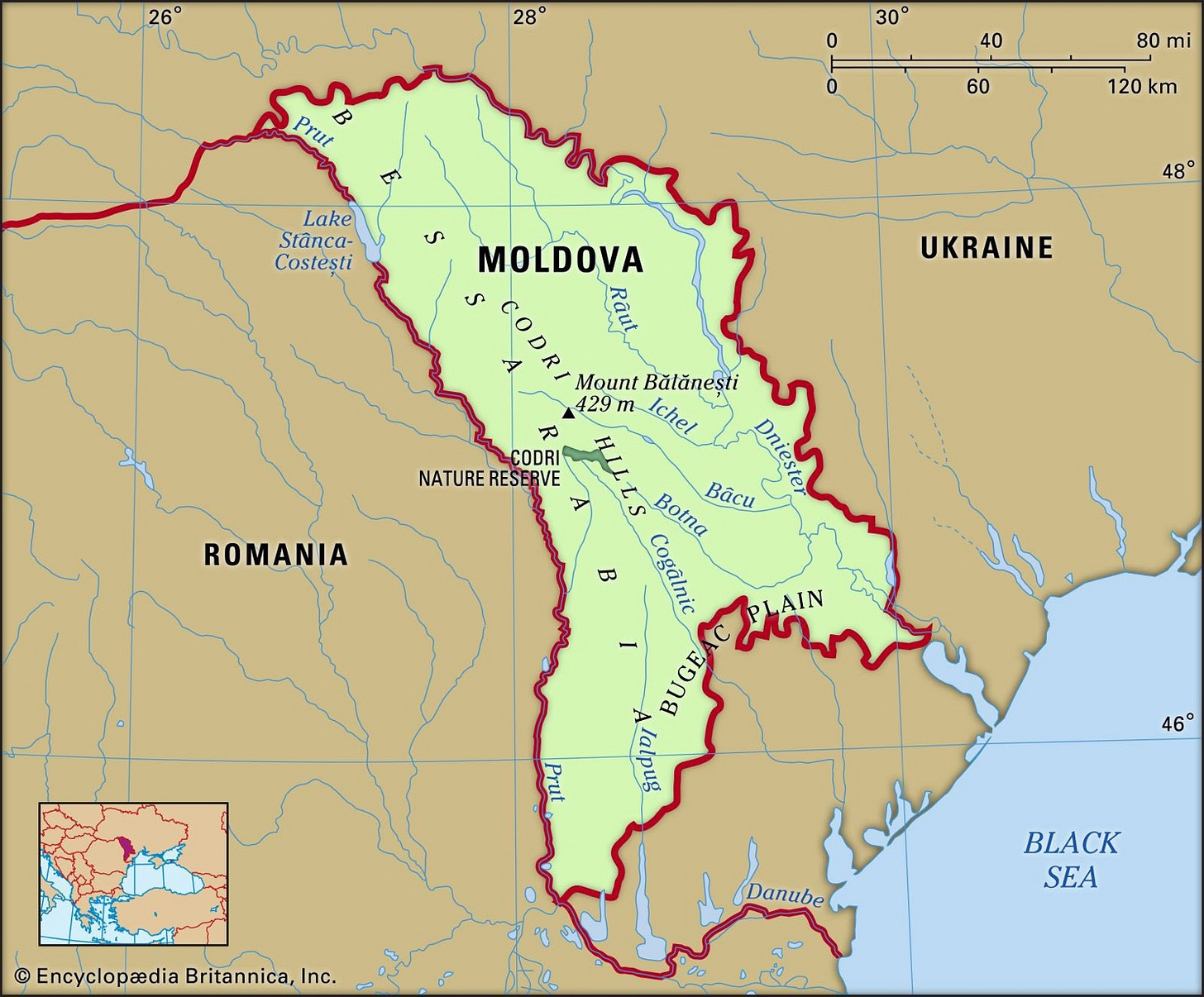
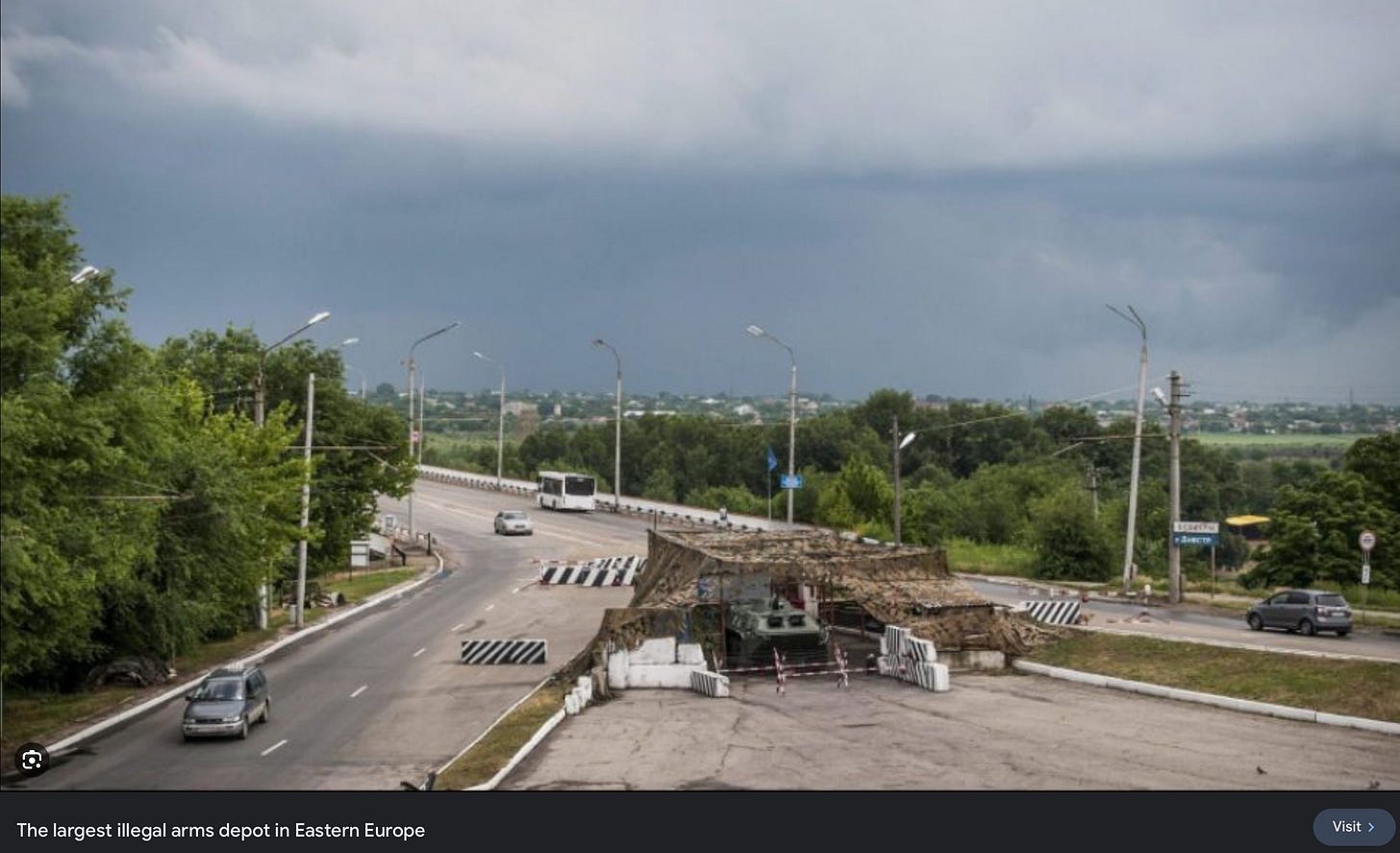
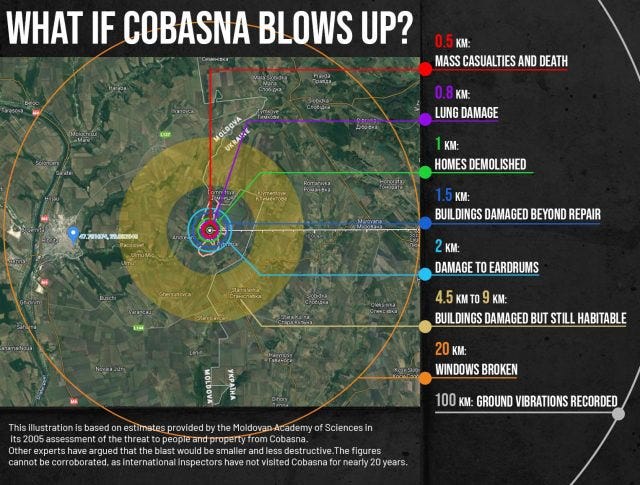
At the start of russia's illegal invasion of Ukraine, Lavrov hinted that once they had subjugated this beleaguered nation, Moldova could be next